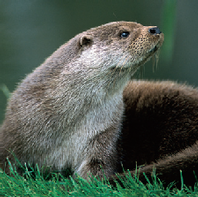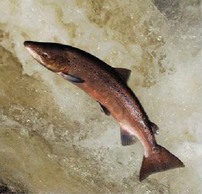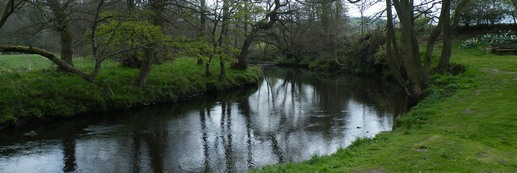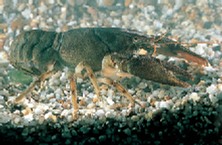

Biodiversity
Action
Plan
Features needed in river and stream habitat for species:
Species associated with rivers and streams include aquatic species occurring in the water course itself (for example fish, riverfly larvae), and terrestrial species on the exposed sediments and on the banks using the water for feeding.
Species supported by rivers and streams:
Many invertebrates, fish, mammals and birds are associated with running water in Barnsley, including national priority species.
Mammals supported by rivers and stream habitat include Otter, Water Vole, Water Shrew.
Bats such as Daubenton, Noctule, and Soprano Pipistrelle feed over the water surface.
Birds. Running water habitat supports a range of birds feeding on flies and other invertebrates, and fish. It is particularly notable for: Dipper, Kingfisher, Sand Martin, Reed bunting, Grey wagtail, Common Sandpiper and Goosander.
Reptiles and amphibians. Running water habitat supports Grass Snake and,where slowly moving, amphibians
Fish: Brown Trout, Bullhead, Eel. Brown Trout, Bullhead, Grayling, and Stone Lloach are found in the upper reaches. Eel, Chub, Barbel, Perch, Dace, Roach and Pike found in the lower reaches of rivers. Minnow and Stickleback are also found.
Invertebrates: Mayfly, stonefly, caddisfly, dragonfly, damselfly including Banded Demoiselle and the nationally rare Southern iron blue fly - Nigrobaetis niger
White-clawed Crayfish is a priority invertebrate species threatened nationally and locally by the invasive introduced Signal Crayfish. The presence of the invasive species can severely affect the habitat’s biodiversity.

River banks and exposed sediments such as shingle beds, mud and sand bars are important for a range of invertebrates, as well as certain mammals and birds for example Water Vole and Sand Martin.
Marginal and bank-side vegetation has an integral role in supporting wildlife in rivers and streams. It provides overhead cover, shelter, shaded conditions, and invertebrate food for aquatic species including for example fish like Brown Trout. It also helps maintain the structure of the banks and reduces erosion and acts as a wildlife corridor and a habitat in its own right.
However conifer planting alongside rivers and streams may create ‘dead’ areas due to a lack of light.
Some migratory fish species such as Salmon and Eel need river systems that are unobstructed and contain varied habitat niches, such as backwaters, gravel beds, riffles and pools for spawning.
As expected, aquatic species require good water quality, unobstructed courses, and exposed sediments. They also need abundant food whether from plant material or invertebrate or other prey.
Some species require coarse woody debris to provide shelter and food and suitable conditions for larval development, spawning etc. A lack of links with other habitats limits the possible range of species.
Certain pollution sensitive aquatic insects, often living on the bottom of the stream, serve as indicators of good water quality, affected by nutrient enrichment, siltation and toxic pollution. They include mayfly and stonefly nymphs, and caddisfly larvae.


Running Water Features and Species
